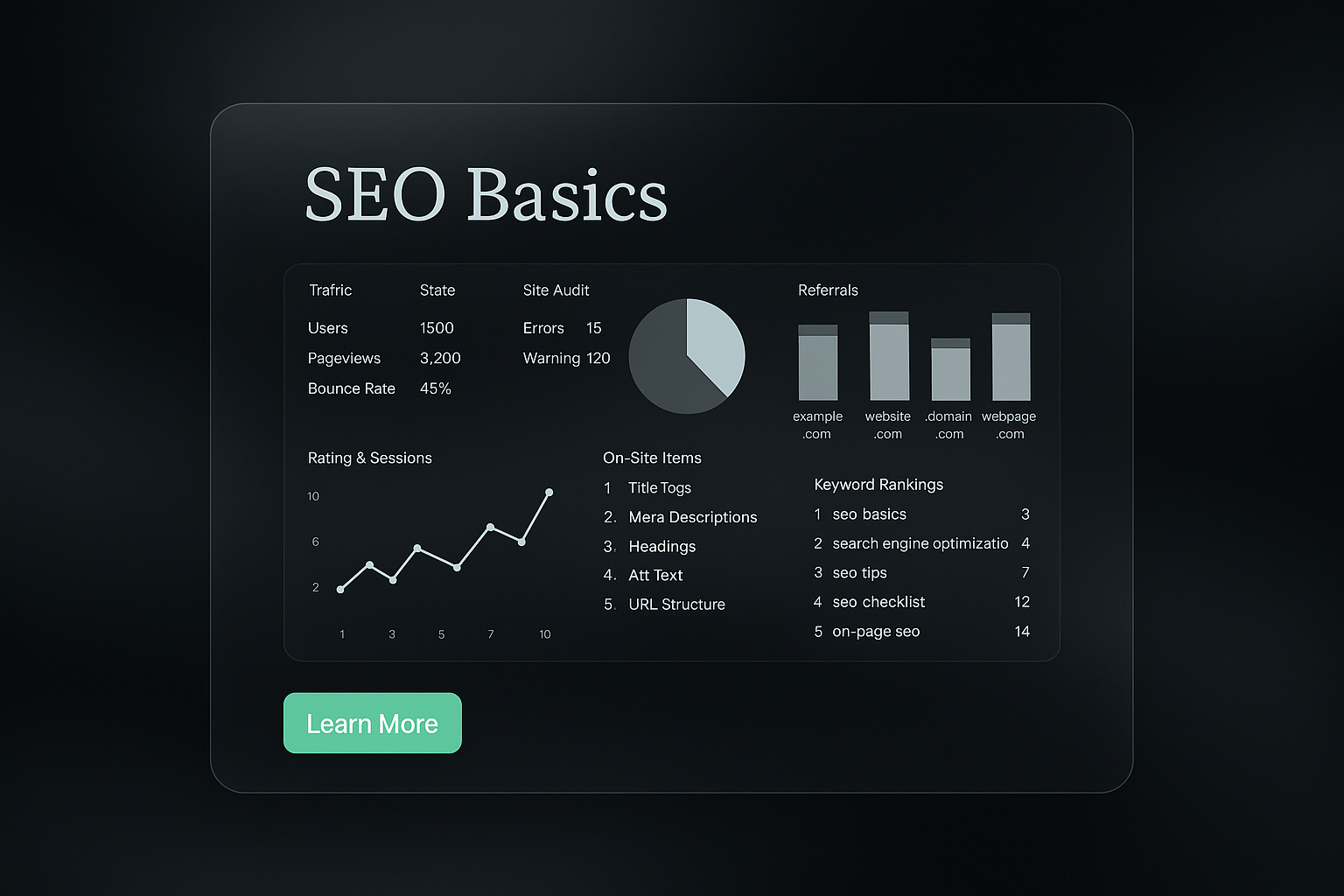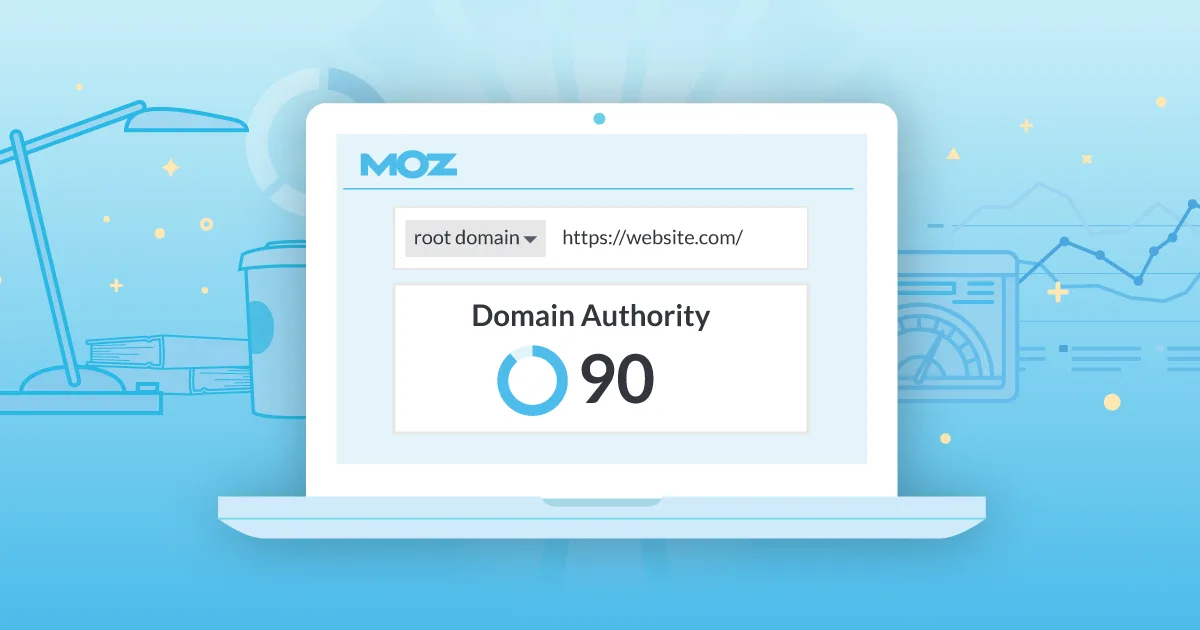Boost Traffic with Low Competitive Keywords (Guide)

Unearthing Hidden Gems in the Keyword Landscape
Keywords are the compass guiding users to your online presence. But the most obvious paths are often crowded, making it difficult to stand out. Understanding keyword research and strategically targeting low-competition keywords is essential for success, regardless of your role or organization size.
Whether you're an individual developer, part of a small team, a large organization, or a seasoned marketing professional, finding those hidden gems is critical. It's no longer a luxury, but a necessity in today's competitive online world.
The field of Search Engine Optimization (SEO) has changed dramatically. We've moved from simple keyword matching to the complex algorithms used by search engines like Google today. The old game of keyword density and meta-tag manipulation is gone.
It's been replaced by a complex interplay of user intent, semantic understanding, and competitive analysis. Effective keyword strategies now focus on aligning content with what users are actually searching for. This shift emphasizes understanding not just what people search, but why.
Digging Deeper Than Basic Keyword Research
This article explores potent strategies to uncover those hidden gems – low-competition keywords – and maximize their impact. We’ll go beyond basic keyword research, equipping you with techniques to:
- Analyze competitor strategies
- Understand emerging trends
- Tap into the power of semantic search
By the end of this article, you’ll have a powerful toolkit for identifying untapped opportunities, driving targeted traffic, and achieving significant growth in your online endeavors.
1. Long-Tail Keyword Strategy
In the competitive online search landscape, choosing the right keywords is crucial for visibility. High-volume keywords might seem attractive, but they're often highly contested. This is where a long-tail keyword strategy comes into play. This strategy focuses on longer, more specific phrases (usually 3+ words) with lower search volume but a much greater potential for conversions.

Long-tail keywords are less competitive because they target specific user intents and needs. For example, a shoe store targeting "women's red leather running shoes size 9" instead of simply "running shoes" has a better chance of attracting a customer ready to buy. This precision makes long-tail keywords easier to rank for and attracts more qualified traffic, solidifying their place in our discussion of low-competition keywords.
Key Features of a Long-Tail Keyword Strategy
- Phrases Containing 3+ Words: Focus on conversational phrases rather than single words.
- Highly Specific Search Intent: Reach users actively looking for a particular product or service.
- Lower Search Volume But Higher Conversion Rates: Fewer searches, but a greater likelihood of sales or desired actions.
- Less Competition Compared to Head Terms: Improve your chances of achieving top rankings on search engine results pages (SERPs).
Pros of Using a Long-Tail Keyword Strategy
- Easier to Rank in Search Results: Less competition equates to higher ranking potential.
- Higher Conversion Rates: Users searching with long-tail keywords are typically closer to making a purchase.
- Lower Cost-Per-Click (CPC) in Paid Campaigns: Niche keywords can lead to lower advertising expenses.
- More Qualified Traffic: Attract users genuinely interested in what you offer.
Cons of Using a Long-Tail Keyword Strategy
- Lower Individual Search Volume: Each long-tail keyword might have limited searches on its own.
- Need to Target Many Keywords: Generating substantial traffic requires a broad approach.
- Increased Content Creation: Developing content for each keyword variation requires planning.
Long-Tail Keyword Success Stories
Many online giants have demonstrated the power of long-tail keywords. Ahrefs, a leading SEO tool provider, built significant traffic by targeting thousands of long-tail keywords related to SEO. Similarly, marketer Neil Patel grew his blog with long-tail keyword variations for marketing topics. Chris Anderson popularized the "Long Tail" concept in his 2006 book, highlighting the power of niche markets. Brian Dean of Backlinko also champions the use of long-tail keywords in a comprehensive SEO strategy.
Tips for Implementing a Long-Tail Keyword Strategy
- Keyword Research Tools: Use tools like Ahrefs, SEMrush, and Ubersuggest to discover long-tail keyword opportunities.
- Q&A Platforms: Explore questions on platforms like Quora, Reddit, and Answer the Public to understand your target audience's queries.
- FAQ Pages: Incorporate long-tail keywords naturally into informative FAQ sections.
- Comprehensive Guides: Create detailed guides that address specific pain points related to long-tail searches. You may also find our guide on Content Marketing Strategy Templates helpful for developing content around your keyword research.
By focusing on the specific needs of your target audience, a long-tail keyword strategy can deliver highly qualified traffic and enhance your overall online presence. This makes it a valuable tool for individuals, small teams, and large organizations.
2. Question-Based Keyword Research
Question-based keyword research is a powerful SEO strategy. It focuses on keywords phrased as questions, rather than broad, competitive terms. This approach targets specific user queries, leading to higher click-through rates and improved search visibility. It also aligns perfectly with the growing popularity of voice search, where users ask questions conversationally.

This method often uncovers low-competition keywords. This allows smaller websites to rank higher in search results. For example, instead of "blood pressure remedies," a site like Healthline might target "how to lower blood pressure naturally." NerdWallet targets "what credit score do I need to buy a house" instead of "mortgage credit score." The Wirecutter uses "how to choose a mattress" to direct traffic to their mattress reviews. These examples highlight the effectiveness of question-based keywords for attracting targeted traffic.
Why Question Keywords Matter
This strategy's rise coincides with the growth of featured snippets, also known as "position zero." Question keywords (who, what, where, when, why, how) often trigger these snippets. Appearing at the top of search results, they offer concise answers directly from a website. Experts like Andy Crestodina (Orbit Media) and Britney Muller emphasize optimizing content for featured snippets. Tools like Answer the Public simplify finding these question-based keywords.
Pros and Cons of Question Keywords
Here’s a breakdown of the advantages and disadvantages:
Pros:
- Featured Snippets: Higher chance of appearing in position zero, increasing visibility and click-through rates.
- User Intent: Directly addresses user needs, improving user experience.
- Voice Search: Performs well with voice search optimization.
- Low Competition: Easier to rank for than broader keywords.
Cons:
- Commercial Intent: Some questions may have lower commercial intent.
- Product Pages: Challenging to incorporate naturally into product pages.
- Search Volume: Some question keywords may have lower search volume.
Implementing Question-Based Keyword Research
Follow these tips to implement this strategy effectively:
- Keyword Research Tools: Use tools like Answer the Public, AlsoAsked.com, or Google's "People Also Ask" feature.
- Content Structure: Use identified questions as H2 headings, followed by concise answers.
- Featured Snippet Optimization: Format answers for featured snippets (around 40-60 words).
- Comprehensive Guides: Group related questions into comprehensive guides or blog posts.
For more content tips, check out: Our guide on Content Optimization
Question-based keyword research is a valuable approach for improving search visibility, especially for content-driven websites. Whether you're a marketer, SEO specialist, or web developer, this strategy can enhance content performance and drive targeted traffic.
3. Niche Topic Specialization
Niche topic specialization is a powerful strategy for discovering low-competition keywords and building a valuable online presence. It involves concentrating your content on a highly specialized sub-niche within a larger industry or topic. By becoming an expert in this narrow area, you can dominate search results for particular terms that larger, more general competitors often miss or don't address in as much detail. This allows you to effectively bypass the fierce competition for broader keywords and engage a highly focused audience.
This approach offers several key features: hyper-focused content within a specific sub-niche, the use of industry-specific terms and jargon, a focus on creating in-depth content rather than broad coverage, and finally, becoming a recognized authority in a specialized area. For example, instead of targeting "digital marketing," a niche specialization might be "SEO for SaaS companies" or even more specific, like "SEO for enterprise SaaS companies using AI."
Benefits and Drawbacks of Niche Specialization
The benefits of this strategy are numerous. You'll encounter less competition from large websites and established brands, allowing you to rank higher in search results. This leads to greater perceived expertise and authority within your chosen niche, attracting a highly targeted audience with specific needs. As a result, conversion rates are typically higher, as your content directly addresses the particular needs of this group. Finally, niche specialization simplifies the process of becoming a thought leader in your area of expertise.
However, there are potential downsides. The total potential audience will be smaller. There’s also a risk of over-specialization, particularly if your chosen niche becomes outdated due to technological advancements or changing market trends. Scaling content creation can also be difficult, as finding writers with the necessary specialized knowledge can be a challenge. These factors can potentially limit overall business growth.
Real-World Examples of Niche Specialization
Several successful examples demonstrate the effectiveness of niche specialization. Backlinko focuses specifically on SEO rather than general digital marketing, becoming a trusted resource for advanced SEO techniques. NomadList caters to digital nomads with specific resources and community features rather than the broader travel market. Wirecutter, meanwhile, concentrated on detailed product reviews, setting itself apart from general consumer information websites. These examples demonstrate how focusing on a specific audience with unique needs can lead to significant success. You might be interested in: Our guide on How To Learn SEO to improve your understanding of this critical element in digital marketing.
Practical Tips for Implementing Niche Specialization
To effectively implement niche specialization, consider these tips:
- Research niche forums, subreddits, and Facebook groups: These platforms are valuable resources for discovering specialized terminology and understanding the specific needs and pain points of your target audience.
- Interview experts in your chosen niche: Directly speaking with specialists can uncover valuable, in-depth knowledge and insights that can inform your content strategy.
- Create content that addresses specific problems unique to the niche: Don't just repeat general information. Focus on providing solutions to the distinct challenges faced by your target audience.
- Build a glossary of niche-specific terms: This glossary can serve as a useful keyword list for targeting low-competition search terms and optimizing your content for relevant searches.
The concept of niche specialization has been championed by thought leaders like Peter Thiel, with his "Zero to One" concept of dominating small markets, Pat Flynn, an advocate of niche site development, and Spencer Haws of Niche Pursuits. These individuals have highlighted the power of focusing on specific niches to achieve online success.
By understanding the details of niche specialization, considering the advantages and disadvantages, and implementing the practical tips outlined above, you can use this strategy to find low-competition keywords, build a strong online presence, and ultimately reach your business goals.
4. Geographical Keyword Modification

Geographical keyword modification is a powerful tactic for achieving high search rankings. It's often underutilized, offering a less competitive landscape than broader keyword strategies. This technique is invaluable for local visibility, especially for businesses operating in specific geographic areas. It refines your core keywords with location-based modifiers, targeting local search intent and connecting with customers seeking services nearby.
This strategy's strength lies in its hyper-local focus. Instead of battling thousands of businesses for a keyword like "plumber," you can target a niche like "emergency plumber in Buckhead Atlanta." This reduces competition and increases conversion likelihood. Someone searching with that level of detail is likely ready to hire, representing a highly qualified lead.
Features and Benefits:
- Combines core keywords with location modifiers: This creates highly specific long-tail keywords.
- Targets local search intent: Captures searches from users actively seeking services near them.
- Particularly effective for service-based businesses: Plumbers, electricians, restaurants, lawyers, etc., benefit significantly.
- Varies competition level based on location specificity: Targeting a broader city will have more competition than a specific neighborhood.
Pros and Cons of Geographical Keyword Modification
Understanding the advantages and disadvantages is crucial for effective implementation.
Pros:
- Significantly lower competition: Makes it easier to rank higher in search results for your specific location.
- Higher conversion rates: Local relevance increases the likelihood of users contacting your business.
- Strong local map pack performance: Improves visibility in Google Maps' "3-pack."
- Easier to establish local authority: Become the recognized leader in your niche within your target area.
Cons:
- Limited search volume: Targeting a small neighborhood may restrict the number of potential customers.
- Content creation demands: Managing content for multiple locations can be time-consuming.
- Potential content redundancy: Careful planning is needed to keep content unique and valuable for each location.
Real-World Examples
- A personal injury law firm targeting "car accident lawyer in Midtown Manhattan" instead of just "lawyer."
- A restaurant optimizing for "best Italian restaurant in North Beach San Francisco" instead of "Italian restaurant."
- An HVAC company focusing on "AC repair in West Hollywood" during summer.
Evolution and Prominent Voices
Geographical keyword modification gained prominence with the rise of local SEO and Google's local map pack. Experts like Darren Shaw (Whitespark), Mike Blumenthal (GatherUp), and Joy Hawkins (Sterling Sky) have highlighted its effectiveness and provided implementation guidance. As mobile search grows for immediate local needs, this strategy has become essential for local visibility.
Practical Implementation Tips
- Research local terminology: Understand how people refer to areas within your target region.
- Create unique location pages: Avoid duplicating content; provide value for each specific location.
- Include local landmarks: Enhance relevance and provide helpful information to users.
- Utilize Google My Business: Gain insights into local search patterns and user behavior.
- Consider nested targeting: Target different levels of specificity (city, neighborhood, street).
By strategically implementing geographical keyword modification, businesses can build a highly skilled local presence, attract qualified leads, and achieve greater success.
5. Competitor Gap Analysis
Competitor Gap Analysis is a powerful SEO tactic. It focuses on identifying weaknesses in your competitors' keyword strategies and using those weaknesses to your advantage. Instead of starting keyword research from scratch, you're building upon the work your competitors have already done. You can uncover low-competition keywords they've missed or aren't targeting effectively. This allows you to rank higher faster, capturing valuable traffic with less effort.
This strategy deserves its place on the list of low-competition keyword tactics because of its targeted, strategic approach. It's not about finding entirely new keywords. Instead, it's about strategically choosing battles you’re more likely to win. By focusing on terms where competitors have weak content, or no presence at all, you dramatically increase your chances of ranking well. This is true even against established players in your industry.
Understanding Competitor Gap Analysis
The core of Competitor Gap Analysis involves systematically comparing your keyword portfolio against your competitors'. This includes:
- Identification of overlooked keyword opportunities: Find keywords relevant to your business that your competitors aren't ranking for.
- Focus on terms where competitors have weak content: Even if a competitor is ranking, their content might be outdated or thin. This presents an opportunity to outrank them with higher-quality content.
- Prioritization based on opportunity size and competition level: Not all keyword gaps are created equal. Focus on keywords with decent search volume and relatively low competition outside of your target competitors.
Weighing the Pros and Cons
The benefits of this approach are numerous:
-
Pros:
- Reveals immediate opportunities without extensive keyword research.
- Helps prioritize content creation efforts.
- Provides a strategic advantage through competitor intelligence.
- Often uncovers unexpected low-competition keywords.
-
Cons:
- Requires access to competitive analysis tools (often paid).
- May lead to following competitors' flawed strategies if not careful.
- Can miss entirely new keyword opportunities outside the competitive landscape.
Real-World Examples
Real-world examples illustrate the power of Competitor Gap Analysis. Moz, under the leadership of Rand Fishkin, famously identified SEO tool feature keywords that competitors like Ahrefs and SEMrush weren't targeting. Similarly, Shopify utilized this strategy to find ecommerce platform keywords that BigCommerce wasn't ranking for. These examples demonstrate how even large companies can overlook valuable keyword opportunities. This leaves the door open for savvy competitors.
You might be interested in: Our guide on Proven SEO Strategies for more information on improving website search engine visibility.
Industry Recognition and Tips
The popularity of Competitor Gap Analysis has grown alongside the rise of sophisticated SEO tools and the increasing competitiveness of the online landscape. Industry leaders like Rand Fishkin (SparkToro, formerly Moz), Larry Kim (MobileMonkey, formerly WordStream), and Ross Hudgens (Siege Media) have all advocated for this strategy, contributing to its widespread adoption.
Tips for Implementation:
- Use the right tools: Invest in tools like SEMrush, Ahrefs, or SpyFu for comprehensive competitive keyword analysis.
- Look for vulnerable positions: Target keywords where competitors rank on page 2 or 3 of search results. These are often easy wins.
- Focus on commercial intent: Prioritize keywords with strong commercial intent that competitors are missing. This ensures you're targeting keywords that can drive conversions.
- Analyze content quality: Don't just look at rankings. Examine the quality of competitors' content for keywords they're ranking poorly for. This will inform your content strategy.
By carefully analyzing your competitors' keyword strategies, you can identify valuable opportunities. You can capture traffic and gain a competitive edge. Competitor Gap Analysis offers a strategic pathway to SEO success.
6. Trending and Emerging Topics Strategy

Online visibility hinges on capitalizing on low-competition keywords. The Trending and Emerging Topics Strategy offers a significant advantage in this arena: the first-mover advantage. This involves identifying keywords related to new, trending, or emerging topics before the competition heats up.
Creating content early for these rising search terms allows you to establish authority and achieve higher rankings before larger competitors even enter the field.
This proactive approach requires consistent monitoring of emerging trends. You'll need to create content tailored to these nascent search terms and capitalize on rising interest before the competition peaks. Think of it as catching a wave early – you ride the momentum without the crowd.
The Rise of Trending Content
This strategy gained significant traction with the rise of content marketing and the focus on thought leadership. Experts like Ryan Law (Animalz content marketing), Brian Dean (known for his 'first mover advantage' content strategy), and Ann Handley (MarketingProfs) have all emphasized the importance of creating content early for emerging topics.
Real-world examples illustrate its effectiveness. Content marketers who created early guides to NFTs saw massive success. SEO blogs that published comprehensive content on Core Web Vitals when they were first announced by Google benefited greatly. Finance sites that covered DeFi (decentralized finance) early reaped the rewards of being early adopters. For a contemporary example, check out: Our guide on Latest AI Trends.
Features of This Strategy
- Monitoring of emerging trends and topics: This requires diligent research and a keen awareness of industry developments.
- Early content creation for new search terms: Be the first to offer valuable insights and information on new topics.
- Focus on rising interest before competition peaks: Maximize your impact when competition is minimal.
- Requires constant awareness of industry developments: Stay ahead of the curve and anticipate future trends.
Pros and Cons
Here’s a quick look at the advantages and disadvantages of this strategy:
| Pros | Cons | |-------------------------------------------|----------------------------------------------------| | Minimal initial competition | Risk of investing in fleeting trends | | Opportunity to establish thought leadership | Requires constant monitoring and quick action | | Potential for backlinks | May need frequent content updates | | Can rank quickly and maintain position | Some trending topics have limited long-term value |
Tips for Implementation
- Use Google Trends to identify rising search terms.
- Monitor industry news, forums, and social media.
- Follow industry thought leaders.
- Create comprehensive 'complete guide' content.
- Set up alerts for relevant industry terms and product announcements.
This strategy is especially beneficial for individual developers, small teams, large organizations, marketing professionals, SEO specialists, and web developers aiming to build a strong online presence. By embracing the Trending and Emerging Topics Strategy, you can position yourself for success in the competitive digital landscape.
7. Semantic Keyword Clustering
Semantic keyword clustering is a powerful SEO strategy. It uses the way search engines understand language and user intent. Instead of focusing on individual keywords, it groups related keywords together. This creates content that covers a broader topic.
This lets you target multiple low-competition keywords with a single piece of content. As a result, you maximize organic reach and build topical authority.
Users rarely use the exact same keywords when searching. Someone might search for "best running shoes for marathon training." Another person could search for "top marathon running shoes." Or, they might search for "which running shoes are good for long distances." These searches use different words. But the underlying intent is the same. It's finding the right running shoes for marathons. Semantic keyword clustering addresses all these queries within one piece of content.
Features and Benefits
Semantic keyword clustering involves:
- Grouping semantically related keywords: This identifies keywords with the same meaning or intent.
- Creating comprehensive content: This develops in-depth content addressing the entire topic. It aims to satisfy various user queries.
- Focusing on user intent: This prioritizes user needs and provides relevant information.
- Natural incorporation of keyword variations: This weaves keywords naturally into the content, avoiding keyword stuffing.
Pros
- Ranks for multiple keywords with single pieces of content: Increases your chances of ranking for more search terms.
- Builds stronger topical authority signals: Demonstrates expertise and boosts search visibility.
- More efficient content production: Creating one comprehensive piece is more efficient than writing multiple articles.
- Better alignment with Google's semantic understanding: Caters to Google's understanding of language and context.
Cons
- Requires more in-depth content creation: Comprehensive content requires substantial research and effort.
- Can be challenging to maintain focus: Covering a broad topic requires planning to maintain clarity.
- May miss very specific long-tail opportunities: Focusing on broad topics might mean missing some specific keywords.
- Requires more advanced keyword research: Identifying and grouping related keywords requires specific tools and knowledge.
Real-World Examples
- HubSpot: Creates comprehensive guides covering various marketing topics.
- Healthline: Develops in-depth condition guides, capturing a significant portion of health-related searches.
- NerdWallet: Publishes comprehensive finance articles that rank for various related financial questions.
Evolution and Popularization
Semantic keyword clustering is linked to advancements in Google’s algorithms. The Hummingbird and RankBrain updates emphasized understanding user intent. Key figures like Dr. Peter J. Meyers (Moz) and Koray Tuğberk GÜBÜR have promoted holistic SEO strategies. Tools like MarketMuse, Clearscope, and the HubSpot Topic Cluster Model have further aided this technique’s adoption.
Tips for Implementation
- Use topic research tools: utilize tools like MarketMuse, Clearscope, or Topic to identify related terms.
- Create content briefs: Develop briefs including primary and secondary semantic keywords.
- Organize content using topic clusters: Structure content around pillar pages and supporting content.
- Use natural language: Focus on clear, engaging content that incorporates keyword variations naturally.
- Structure content with logical H2s and H3s: Use descriptive headings that incorporate semantic variations.
Semantic keyword clustering represents a shift in SEO strategy. It aligns with the evolving search landscape. By using this strategy, you can improve your website's visibility and build authority. Ultimately, this drives more organic traffic.
8. Search Intent Pattern Analysis
Search Intent Pattern Analysis is a powerful strategy for uncovering low-competition keywords that often gets overlooked. Instead of focusing only on keyword search volume and difficulty, this technique prioritizes understanding the why behind a search. It involves a deep dive into the search engine results pages (SERPs) to identify patterns where existing content isn't meeting user needs. By recognizing and filling these content gaps, you can create highly relevant content that ranks well, even in competitive landscapes. This approach deserves a spot on this list because it offers a path to success that bypasses traditional keyword competition metrics, focusing on user satisfaction instead.
How It Works
The core of Search Intent Pattern Analysis lies in identifying mismatches between what users search for and what search engines currently deliver. This involves carefully examining the top-ranking pages for a target keyword, looking for commonalities and, more importantly, gaps. Are users searching for "best CRM" but only finding lengthy reviews instead of helpful comparison tables? Are "keto diet" searchers bombarded with scientific explanations when they really want meal plans? These discrepancies highlight opportunities to create content that genuinely connects with the target audience.
Features and Benefits
- Deep analysis of search intent: This goes beyond basic keyword research to understand underlying user needs and motivations.
- Identification of mismatches between queries and results: This pinpoints opportunities where current content fails to satisfy search intent.
- Focus on satisfying specific user needs: It helps create content that directly addresses what users are looking for, leading to higher engagement.
- Pattern recognition across SERP features and content types: It involves analyzing SERP features like featured snippets and "People Also Ask" boxes to gain insights into user intent and preferred content formats.
This approach offers several advantages:
Pros
- Discovers opportunities in seemingly competitive spaces: Uncovers hidden niches even within highly competitive keyword verticals.
- Creates more relevant content that users prefer: Results in higher click-through rates, longer dwell times, and better conversion rates.
- Often results in higher engagement metrics: Content that truly resonates with users tends to be shared and linked to more frequently.
- Can outperform competitors with better intent matching: By focusing on user needs, you can outrank competitors even if they have higher domain authority.
Cons
- Requires significant manual SERP analysis: This process can be time-consuming and detail-oriented.
- Intent can be subjective and open to interpretation: Understanding user intent isn't always easy and requires nuanced interpretation.
- Google may already be optimizing for the correct intent: In some cases, Google may already be working to improve the search results, making it more challenging to utilize intent mismatches.
- Time-intensive research process: Thorough SERP analysis takes dedicated time and effort.
Real-World Examples
- "Best CRM": Recognizing that users searching for "best CRM" want comparison tables and feature lists, while competitors mainly offer in-depth reviews.
- "Keto Diet": Discovering that "keto diet" searchers often look for meal plans and practical recipes, while existing results focus on the science behind the diet.
Tips for Implementation
- Analyze the top 10 results for each target keyword: Understand the current intent landscape and find common themes and gaps.
- Look for user complaints in comments and forums: Uncover unmet needs and user frustrations.
- Study SERP features (featured snippets, knowledge panels): Gain insights into Google's understanding of user intent and preferred content formats.
- Create content that combines the best elements of existing results while addressing gaps: Build upon existing content but make the user experience better.
- Test different content formats (guides, tools, calculators): Experiment to find the format that best suits user intent and drives engagement.
This method has gained traction thanks to SEO experts like Mike King (iPullRank), Kevin Indig (G2), and Eli Schwartz (Product-Led SEO), who have championed a more user-centric approach to keyword research and content creation. They highlight the importance of understanding the user journey and creating content that aligns with their needs and expectations.
8-Point Strategy Comparison
1. Long-Tail Keyword Strategy
- 🔄 Complexity: Moderate – Requires targeting many specific phrases
- ⚡ Efficiency/Resources: Low resource needs but demands ongoing content creation
- 📊 Expected Outcomes: ⭐ Easier ranking with higher conversion rates from qualified, niche traffic
- 💡 Ideal Use Cases & Advantages:
- Suited for niches with lower competition
- Cost-effective
- Ideal for specific user intent targeting
2. Question-Based Keyword Research
- 🔄 Complexity: Moderate – Involves framing keywords as questions
- ⚡ Efficiency/Resources: Efficient with free tools; minimal investment for research
- 📊 Expected Outcomes: ⭐ Increased chances for featured snippets and improved voice search performance
- 💡 Ideal Use Cases & Advantages:
- Best for informational content and FAQs
- Great for capturing low-competition, question-framed queries
3. Niche Topic Specialization
- 🔄 Complexity: Low to moderate – Focus on a narrow sub-niche
- ⚡ Efficiency/Resources: Low resource input; utilizes subject matter expertise
- 📊 Expected Outcomes: ⭐ Establishes authority and higher conversion through specialized content
- 💡 Ideal Use Cases & Advantages:
- Ideal for businesses seeking thought leadership
- Effective in areas with less direct competition
4. Geographical Keyword Modification
- 🔄 Complexity: Moderate – Adds local modifiers and location focus
- ⚡ Efficiency/Resources: Variable; may require multiple location-specific content pieces
- 📊 Expected Outcomes: ⭐ Higher local conversion rates and stronger performance in local search (map packs)
- 💡 Ideal Use Cases & Advantages:
- Perfect for service-based and local businesses
- Great for targeting specific geographic areas
5. Competitor Gap Analysis
- 🔄 Complexity: High – Requires deep competitive research and tools
- ⚡ Efficiency/Resources: Resource-intensive; often relies on paid competitive analysis tools
- 📊 Expected Outcomes: ⭐ Uncovers immediate low-competition opportunities and strategic content creation
- 💡 Ideal Use Cases & Advantages:
- Effective in competitive markets
- Helps find overlooked keywords and prioritize content efforts
6. Trending and Emerging Topics Strategy
- 🔄 Complexity: High – Needs constant monitoring and agile response
- ⚡ Efficiency/Resources: Moderate resources; fast action required to capture trends
- 📊 Expected Outcomes: ⭐ Quick rankings and first-mover advantage with potential for rapid authority growth
- 💡 Ideal Use Cases & Advantages:
- Best for industries undergoing rapid change
- Ideal for capturing trending topics before competition does
7. Semantic Keyword Clustering
- 🔄 Complexity: High – Demands advanced keyword research and organization
- ⚡ Efficiency/Resources: Requires considerable resources to produce comprehensive content
- 📊 Expected Outcomes: ⭐ Ranks for multiple interrelated keywords and builds highly skilled topical authority
- 💡 Ideal Use Cases & Advantages:
- Suitable for broad topics needing in-depth coverage
- Aligns with natural language and search intent
8. Search Intent Pattern Analysis
- 🔄 Complexity: High – Involves detailed, manual SERP and intent analysis
- ⚡ Efficiency/Resources: Time-intensive; requires strong analytical resources
- 📊 Expected Outcomes: ⭐ Improved content relevance and engagement through better alignment with user needs
- 💡 Ideal Use Cases & Advantages:
- Ideal for competitive niches
- Helps leapfrog competitors by matching intent more accurately
Conquering the SERPs With Strategic Keyword Targeting
Mastering low-competition keyword research can unlock significant organic growth. By understanding and implementing smart keyword strategies, you can pinpoint valuable opportunities often missed by others. Think long-tail keywords, question-based research, competitor gap analysis, and semantic clustering. Ultimately, success depends on aligning your keyword strategy with user intent and creating high-quality, relevant content.
Continuously analyzing your performance is essential. The search landscape is always evolving, with trends like voice search and AI-driven personalization constantly shaping how users search and how search engines deliver results. Ongoing learning and adaptation are crucial for sustained success.
Here are some key takeaways to remember as you begin your keyword journey:
- Focus on User Intent: Understand why users search specific terms.
- Analyze the Competition: Identify gaps and opportunities.
- Prioritize Quality Content: Create valuable, engaging content that satisfies user needs.
- Embrace Ongoing Learning: Adapt to search engine algorithm updates and emerging trends.
- Track and Analyze: Monitor your keyword performance and adjust your strategy accordingly.
Streamlining Your Keyword Research
Ready to supercharge your keyword research and content creation? Stop wasting time manually sifting through data. Repo-Booster, an AI agency, uses artificial intelligence to analyze competitors, pull real-time data from leading marketing tools, and create strategic content plans. These plans include content briefs and gap analyses.
Repo-Booster automates your entire content workflow, from SEO-optimized content and social media strategies to performance marketing and email campaigns. It even enhances brand voice with GPT-4. Explore affordable plans designed for individuals, small teams, and large organizations. Visit Repo-Booster today and unlock the true potential of your online presence.
Want your blog posts to actually get noticed?
With DeepRankAI, creating content that ranks well and brings in more traffic doesn’t have to be a grind. Our AI is tuned to help you write posts that connect with people and search engines—so your site gets the attention it deserves.
👉 Check out DeepRankAI and see how it can make content creation a whole lot easier.


